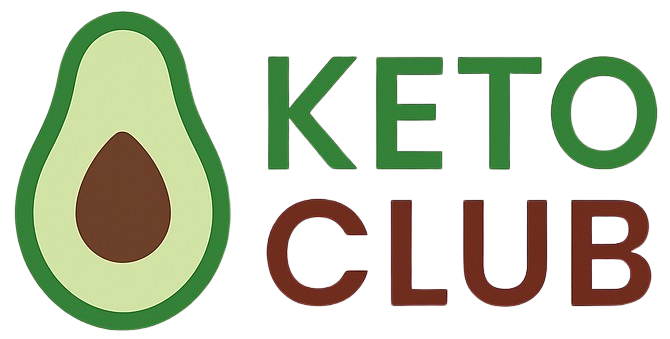The ketogenic diet—high in fat, moderate in protein, and extremely low in carbohydrates—has become a go-to for weight loss and metabolic health. But when it comes to fitness and performance, there’s still a lot of confusion: Can you work out on keto? Will your energy levels drop? Is fat really enough to fuel intense exercise?
The short answer: Yes, you can work out on keto—but how you train and fuel your body needs to be adjusted for best results.
In this article, we’ll explore the relationship between the keto diet and exercise, including how your body fuels different types of workouts, the best kinds of exercise to pair with keto, and how to structure your nutrition before and after training for optimal performance and recovery.
Understanding How Keto Affects Your Energy System
To understand keto and exercise, you need to first understand how the body produces energy during physical activity.
Your Body Has Two Main Fuel Sources:
- Glucose (from carbs) – Used during high-intensity, anaerobic activities like sprinting, HIIT, or heavy lifting.
- Fat (and ketones) – Used during low-to-moderate intensity, aerobic activities like walking, jogging, or steady-state cardio.
On a typical high-carb diet, the body stores glucose in the muscles and liver as glycogen, which is easily accessible during workouts. On a keto diet, glycogen stores are limited, so your body becomes more efficient at burning fat and ketones for energy.
This shift in fuel usage has pros and cons depending on your workout type.
Keto and Different Types of Exercise
1. Endurance and Aerobic Training (Best Fit)
Activities like jogging, biking, swimming, hiking, and walking rely heavily on fat oxidation. Keto is ideal for endurance athletes because once your body is keto-adapted, it can tap into virtually unlimited fat stores for energy.
✅ Why It Works: Keto reduces reliance on frequent carb intake and prevents blood sugar crashes during long sessions.
⚡ Fuel Tip: Stay hydrated, add electrolytes, and consider MCT oil or exogenous ketones before longer sessions for a quick boost.
2. Strength Training and Powerlifting (Mixed Results)
Heavy weight training relies on the anaerobic system, which needs quick-burning glycogen. On strict keto, glycogen is limited, which may reduce performance in high-intensity lifting, especially in the early adaptation phase.
⚠️ Why It’s Tricky: Explosive energy depends on carbs. Some lifters feel weaker or slower on keto—at least initially.
💡 Solution: Try a Targeted Ketogenic Diet (TKD) where you eat 20–50g of fast-absorbing carbs (like a banana or dextrose) 30 minutes before training. This fuels your workout without kicking you out of ketosis long term.
3. High-Intensity Interval Training (HIIT)
Short bursts of intense activity—like sprints, burpees, or circuit training—require glycogen. Like with strength training, performance may dip on strict keto.
⚠️ Adaptation Required: Performance can drop in the first few weeks. With time, some people regain their full ability as their body adapts.
🔁 Alternative: Use the Cyclical Ketogenic Diet (CKD)—5 days of strict keto followed by 1–2 days of higher carbs to replenish glycogen for intense workouts.
4. Bodybuilding and Muscle Gain
Muscle growth (hypertrophy) is driven by training stimulus and sufficient protein + insulin signaling. On keto, insulin levels are lower, and the anabolic response may be blunted.
⚠️ Challenge: Building mass is harder, though not impossible, on keto.
💡 Solution: Ensure adequate protein (0.8g to 1g per lb of lean body mass) and consider using TKD or CKD to stimulate muscle growth.
How to Fuel Your Workouts on Keto
Whether you’re lifting weights or running marathons, you still need to fuel your body before and after exercise—just differently than on a carb-based diet.
✅ Pre-Workout Nutrition on Keto
On keto, your goal is to provide steady energy without carbs (unless doing TKD).
- Fats for Fuel: MCT oil, coconut oil, or a fatty coffee (bulletproof-style) about 30–60 minutes before training
- Optional Carbs (TKD only): 20–50g of fast carbs like glucose or fruit if doing HIIT or strength training
- Hydration: Add sea salt or electrolyte powder to water—especially important since keto can cause electrolyte loss
Example Pre-Workout Meal:
1 hard-boiled egg, a tablespoon of almond butter, and black coffee with MCT oil
✅ Post-Workout Nutrition on Keto
After exercise, your body needs nutrients to recover and build.
- Protein: Aim for 20–30g of quality protein to promote muscle repair
- Fat: Keep fats moderate post-workout to aid satiety and support ketosis
- Electrolytes: Replenish sodium, potassium, and magnesium
Example Post-Workout Meal:
Grilled chicken thighs with avocado and a side of sautéed spinach in olive oil
If doing CKD or TKD, you can also include a small carb window post-workout to restore glycogen and support recovery.
Supplements That Support Keto Workouts
1. Electrolytes (MUST-HAVE)
Sweating and ketosis both deplete electrolytes. Supplementing sodium, potassium, and magnesium prevents fatigue, cramping, and poor performance.
2. MCT Oil
Medium-chain triglycerides convert quickly into ketones, giving you a clean burst of energy. Great pre-workout.
3. Creatine
Supports high-intensity strength training. Works well with or without carbs.
4. Beta-Alanine and Caffeine
Can enhance endurance and reduce perceived fatigue.
5. Exogenous Ketones
Optional, but helpful during the adaptation phase or long endurance workouts to increase ketone levels and energy.
Common Challenges and How to Overcome Them
❌ Loss of Strength or Energy Early On
This is normal during the adaptation phase (first 2–4 weeks). Your body is still learning how to efficiently burn fat for fuel.
✅ Fix: Stay hydrated, increase sodium intake, reduce workout intensity temporarily, and allow time to adapt.
❌ Muscle Cramps or Fatigue
Usually caused by electrolyte imbalances.
✅ Fix: Add more salt to food, supplement magnesium and potassium, and drink more water.
❌ Feeling Flat in the Gym
Some lifters report a lack of muscle “pump” on keto due to lower glycogen and water retention.
✅ Fix: Try TKD or refeed days. You may also benefit from carb cycling around your workouts.
Who Should Combine Keto and Exercise?
The keto + exercise combo works best for people who:
- Want to burn fat efficiently while maintaining muscle
- Enjoy endurance training (running, cycling, hiking)
- Prefer low to moderate intensity workouts
- Struggle with energy crashes or sugar cravings on high-carb diets
- Need better mental clarity and stable energy
It can work for strength athletes and bodybuilders too—but it requires more planning, targeted carbs, and patience during adaptation.
Final Thoughts: Can You Work Out on Keto?
Absolutely. But keto workouts are a different beast.
By understanding how your body fuels activity on fat instead of carbs, you can tailor your workouts and nutrition to fit this unique way of eating. It might take a few weeks to fully adapt, but once you do, many people report:
- Better endurance
- Reduced recovery time
- Less soreness
- Stable energy throughout the day
If your goal is sustainable fat loss, long-term health, or metabolic flexibility, pairing keto with consistent training may be one of the most powerful combinations available.


